Abstract
It had already been shown with a single virulent strain (A42) of Fusobacterium necrophorum that suspension of the fusobacteria in sub-lethal doses of broth cultures of other bacteria reduced the minimum infective dose (greater than 10(6) organisms) for mice by subcutaneous inoculation, sometimes to less than 10 organisms. The present study extended the known range of bacteria with strong infectivity-enhancing properties to include Bacillus cereus, Klebsiella oxytoca and Staphylococcus aureus; and those with weaker effect to include Bacillus subtilis, 'Bacteroides melaninogenicus', Clostridium sporogenes, Pasteurella haemolytica, and Proteus mirabilis. The study also showed that five further virulent strains of F. necrophorum closely resembled A42 in respect of striking susceptibility to infectivity enhancement by Escherichia coli. Actinomyces (Corynebacterium) pyogenes and S. aureus. One further strain (A6) of F. necrophorum resembled A42 in respect of strong infectivity enhancement by A. pyogenes, S. aureus, B. cereus and K. oxytoca but differed from it and the other five strains in being only slightly affected by E. coli. This work was a necessary prelude to the development of a method, based on infectivity enhancement, for the detection and isolation of F. necrophorum present in small numbers in heavily contaminated material such as faeces.
Full text
PDF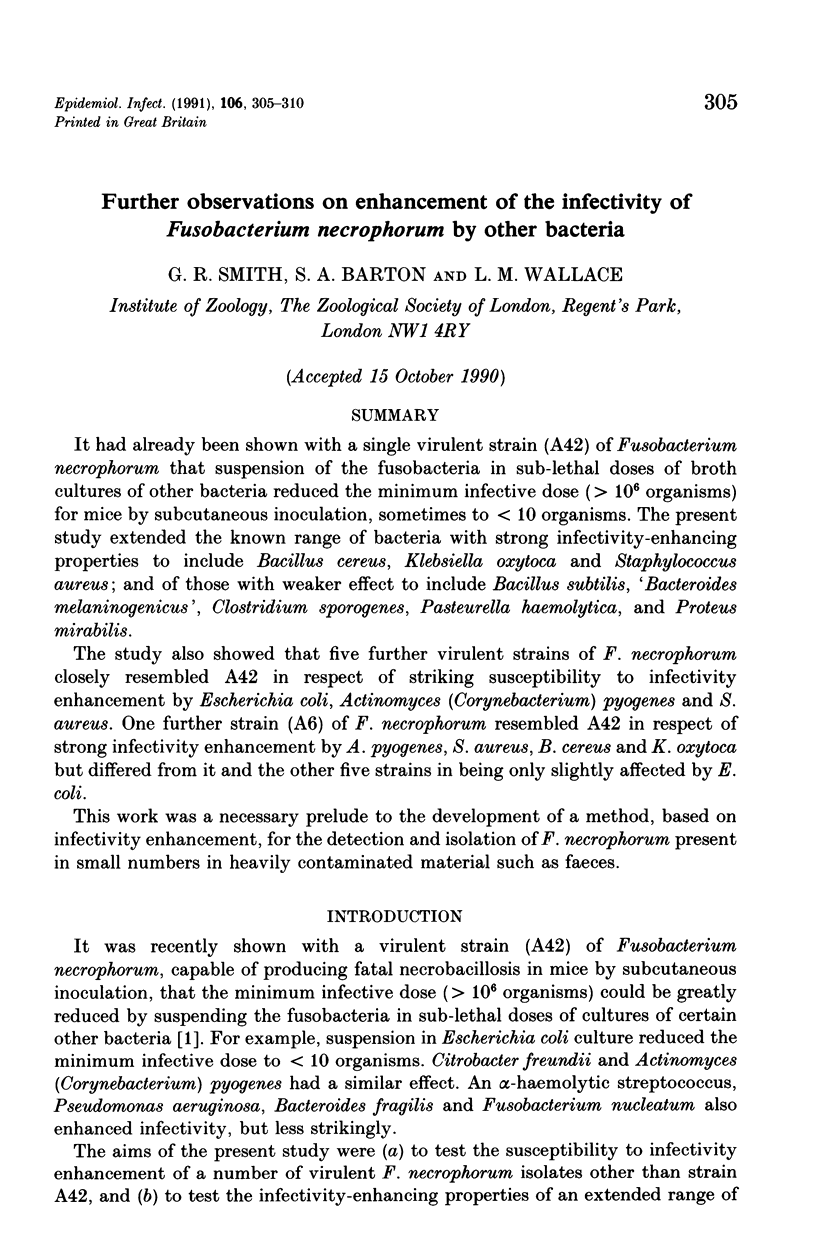
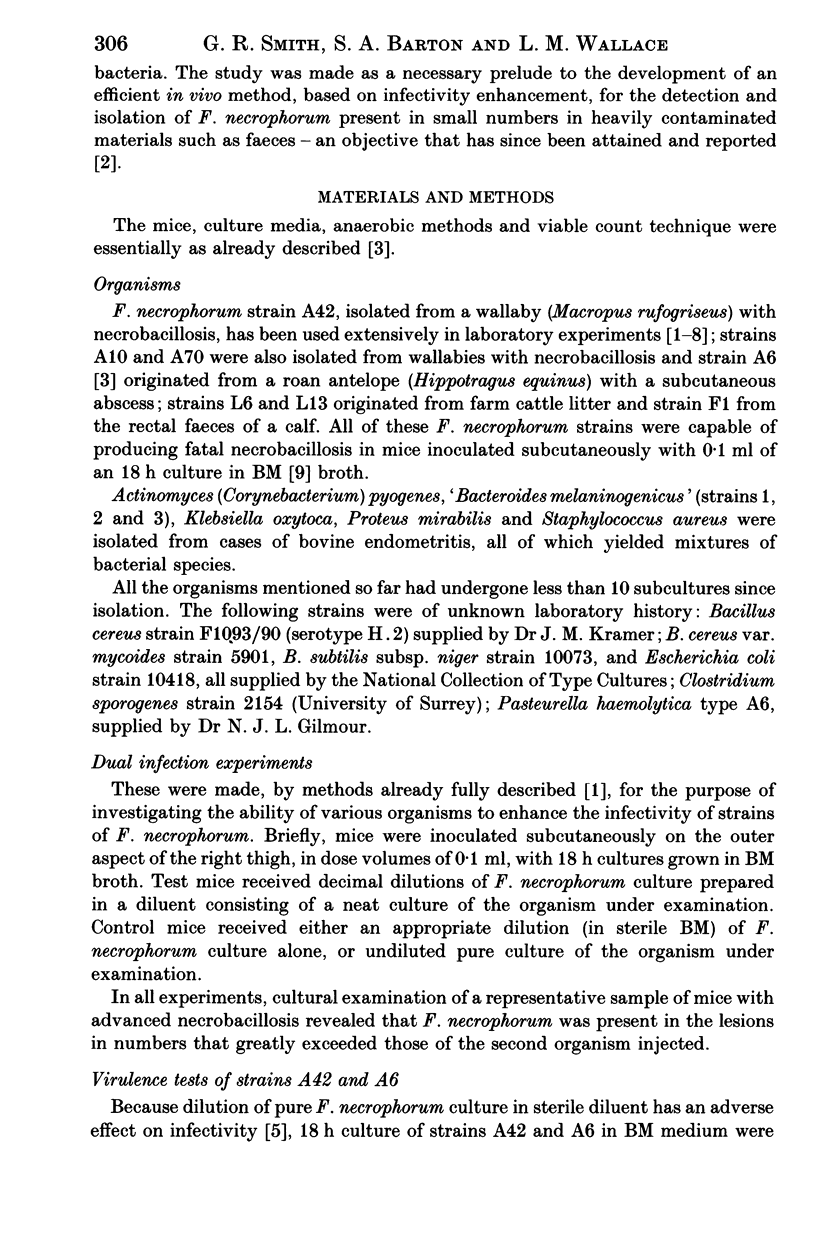
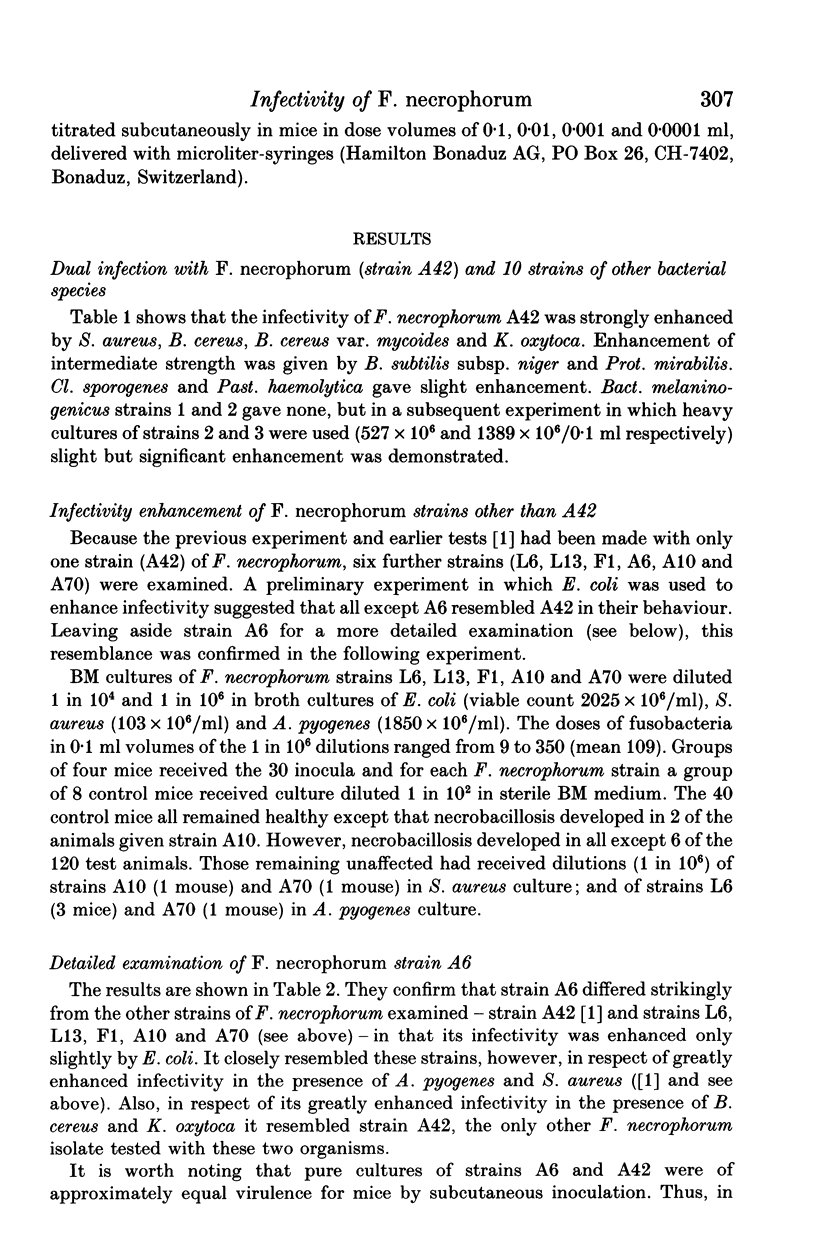
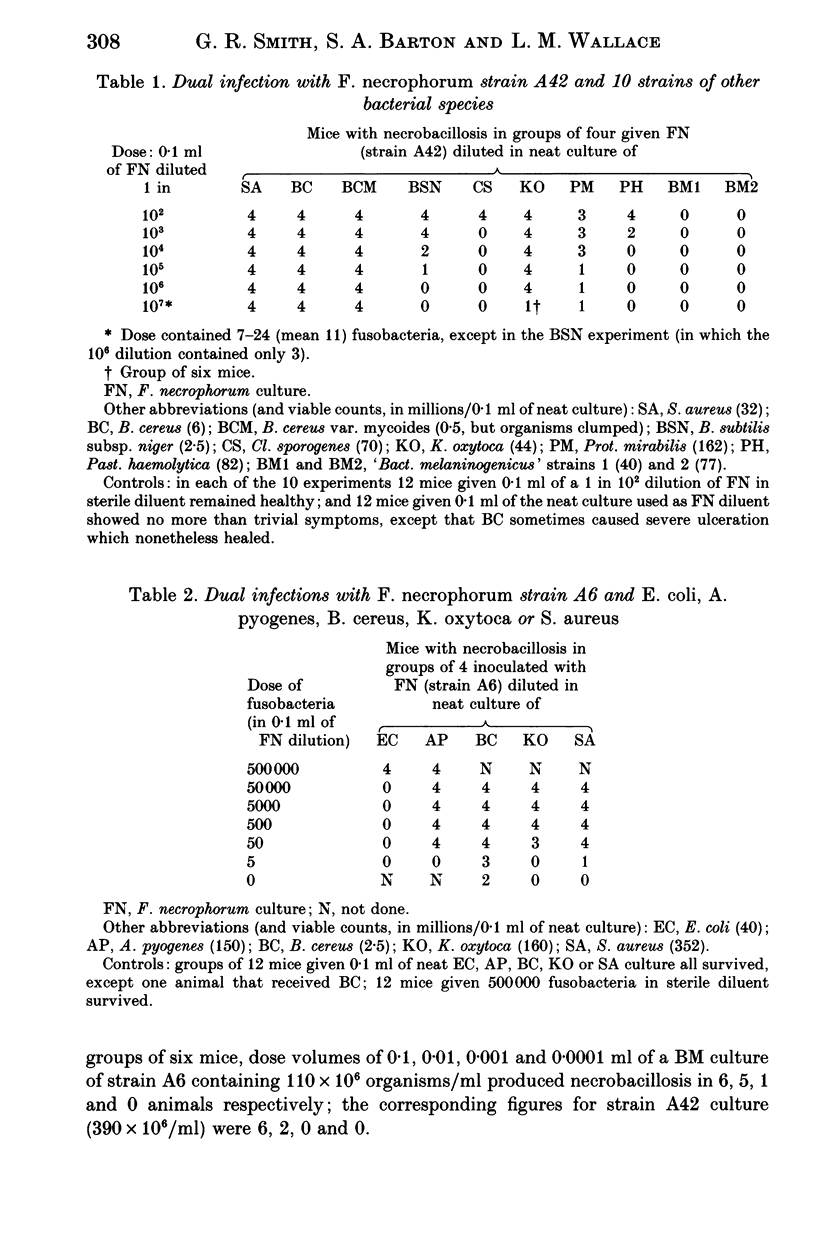
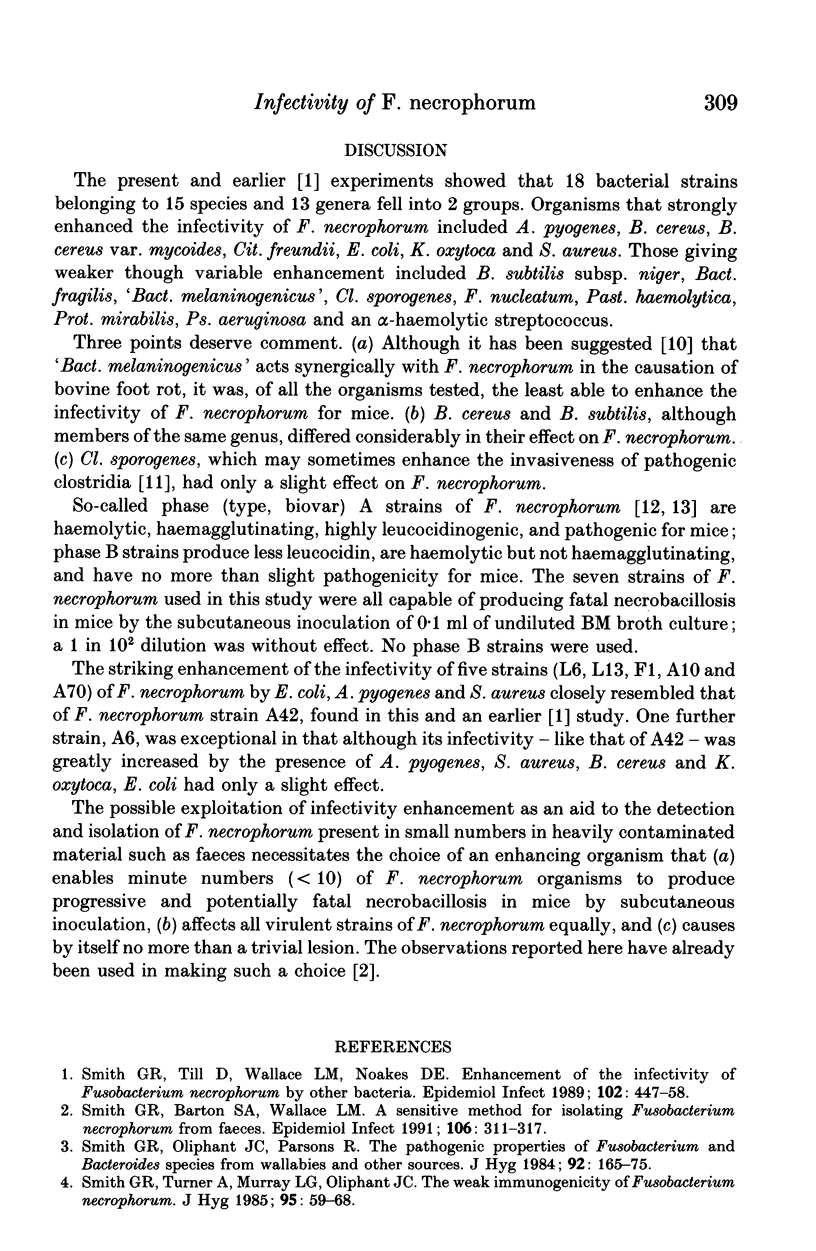
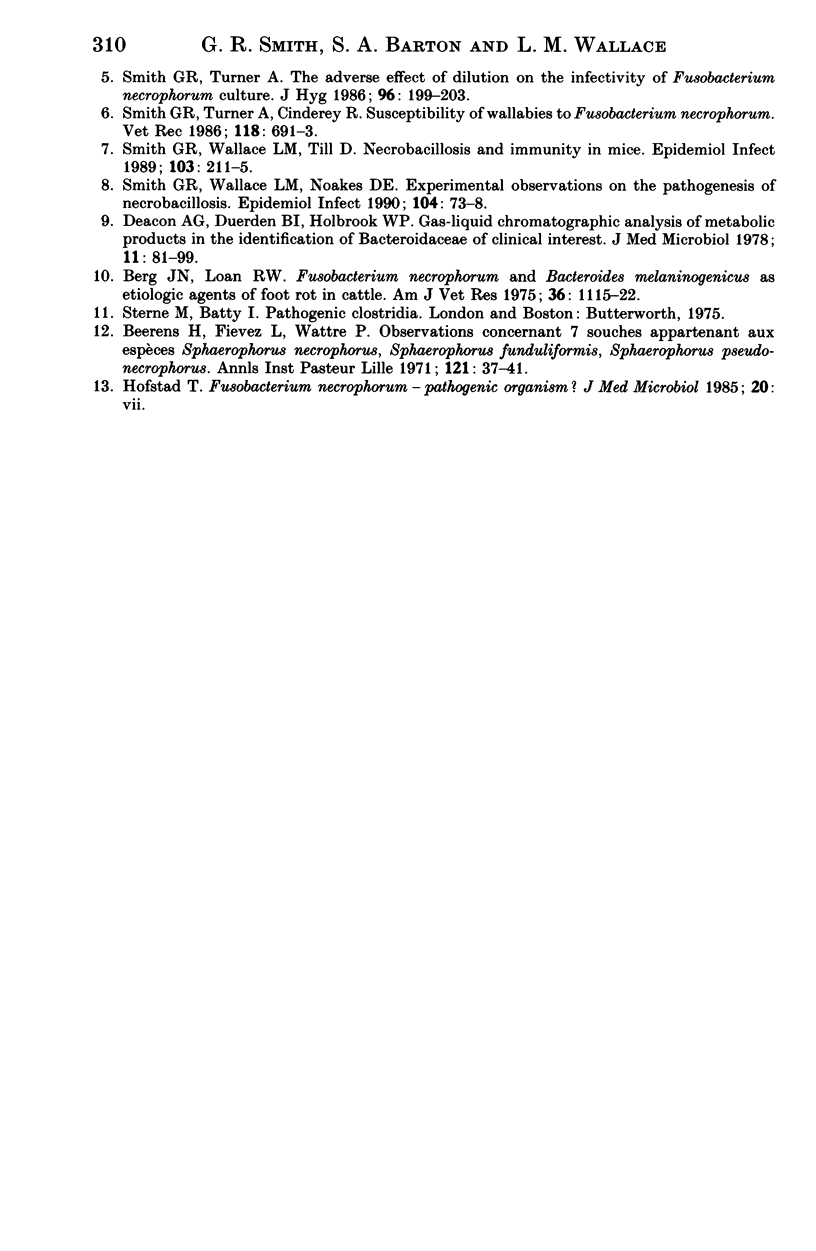
Selected References
These references are in PubMed. This may not be the complete list of references from this article.
- Beerens H., Fievez L., Wattre P. Observations concernant 7 souches appartenant aux espèces Sphaerophorus necrophorus, Sphaerophorus funduliformis Sphaerophorus pseudonecrophorus. Ann Inst Pasteur (Paris) 1971 Jul;121(1):37–41. [PubMed] [Google Scholar]
- Berg J. N., Loan R. W. Fusobacterium necrophorum and Bacteroides melaninogenicus as etiologic agents of foot rot in cattle. Am J Vet Res. 1975 Aug;36(08):1115–1122. [PubMed] [Google Scholar]
- Deacon A. G., Duerden B. I., Holbrook W. P. Gas-lipuid chromatographic analysis of metabolic products in the identification of bacteroidaceae of clinical interest. J Med Microbiol. 1978 May;11(2):81–99. doi: 10.1099/00222615-11-2-81. [DOI] [PubMed] [Google Scholar]
- Smith G. R., Barton S. A., Wallace L. M. A sensitive method for isolating Fusobacterium necrophorum from faeces. Epidemiol Infect. 1991 Apr;106(2):311–317. doi: 10.1017/s0950268800048469. [DOI] [PMC free article] [PubMed] [Google Scholar]
- Smith G. R., Oliphant J. C., Parsons R. The pathogenic properties of Fusobacterium and Bacteroides species from wallabies and other sources. J Hyg (Lond) 1984 Apr;92(2):165–175. doi: 10.1017/s0022172400064184. [DOI] [PMC free article] [PubMed] [Google Scholar]
- Smith G. R., Till D., Wallace L. M., Noakes D. E. Enhancement of the infectivity of Fusobacterium necrophorum by other bacteria. Epidemiol Infect. 1989 Jun;102(3):447–458. doi: 10.1017/s0950268800030168. [DOI] [PMC free article] [PubMed] [Google Scholar]
- Smith G. R., Turner A., Cinderey R. Susceptibility of wallabies to Fusobacterium necrophorum. Vet Rec. 1986 Jun 21;118(25):691–693. doi: 10.1136/vr.118.25.691. [DOI] [PubMed] [Google Scholar]
- Smith G. R., Turner A., Murray L. G., Oliphant J. C. The weak immunogenicity of Fusobacterium necrophorum. J Hyg (Lond) 1985 Aug;95(1):59–68. doi: 10.1017/s0022172400062288. [DOI] [PMC free article] [PubMed] [Google Scholar]
- Smith G. R., Turner A. The adverse effect of dilution on the infectivity of Fusobacterium necrophorum culture. J Hyg (Lond) 1986 Apr;96(2):199–203. doi: 10.1017/s0022172400065967. [DOI] [PMC free article] [PubMed] [Google Scholar]
- Smith G. R., Wallace L. M., Noakes D. E. Experimental observations on the pathogenesis of necrobacillosis. Epidemiol Infect. 1990 Feb;104(1):73–78. doi: 10.1017/s0950268800054546. [DOI] [PMC free article] [PubMed] [Google Scholar]
- Smith G. R., Wallace L. M., Till D. Necrobacillosis and immunity in mice. Epidemiol Infect. 1989 Aug;103(1):211–215. doi: 10.1017/s095026880003051x. [DOI] [PMC free article] [PubMed] [Google Scholar]


